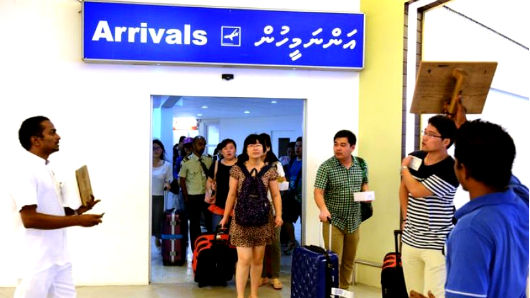Tourist arrivals increase 4.3 percent in first quarter
Arrivals grew by 15.6 percent in January, the peak season for the industry which also coincided with the Chinese New Year. But the growth rate was marginal in February at 0.3 percent and registered a 2.1 percent decrease in March.

13 May 2017, 9:00 AM
Tourist arrivals increased by 4.3 percent in the first three months of 2017 as growth from traditional European markets offset a continuing decline in Chinese holidaymakers.
According to statistics released by the tourism ministry last week, 359,053 tourists visited the Maldives during the first quarter, up from 344,166 in the same period last year.
Arrivals grew by 15.6 percent in January, the peak season for the industry which also coincided with the Chinese New Year. But the growth rate was marginal in February at 0.3 percent and registered a 2.1 percent decline in March.
Revenue from the tourism goods and services tax also increased from US$79 million in the first quarter of 2016 to US$85 million this year.
Become a member
Get full access to our archive and personalise your experience.
Already a member?
Discussion
No comments yet. Be the first to share your thoughts!
No comments yet. Be the first to join the conversation!
Join the Conversation
Sign in to share your thoughts under an alias and take part in the discussion. Independent journalism thrives on open, respectful debate — your voice matters.




